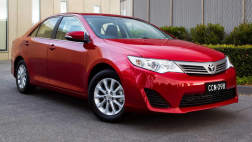A new round of run-out deals has just exploded in showrooms but these are different. Instead of signalling the change of a model, they're all about the Model Year.
That means minor changes, perhaps just a couple of tweaks to the standard equipment list, and not the sort of wholesale renewal we've come to expect in Australia from the arrival of a genuinely new model.
Once again, we can blame it on the Americans. In the USA, spring in September is the traditional season for the car industry to give their cars a tiny tweak to lure customers out of hibernation and into showrooms. So they invented the Model Year refresher program.
One of the first companies to bring the MY move to Australia was Subaru, but now the pattern is being repeated across many brands and there are traps for shoppers who don't do their homework.
It's vital to check that the changes are worthwhile and not just new colours and alloys, and that the "run-out" pricing is a real bargain for the superseded model.
Some people might also think they're waiting for an early arrival, or getting a big break on next year's all-new cars, but that's not always the case.
A Model Year update might look enticing at first, but it's not the same as a change of calendar year
The worst shocks can come at trade-in time. A Model Year update might look enticing at first, but it's not the same as a change of calendar year.
And it's the calendar year of creation, stamped onto the VIN plate on the firewall, which determines the age of a car.
So a car built in 2015, even if it's one of the latest MY16 versions, is still a '15 model when its comes time to trade.



.jpg)
.jpg)
.jpg)

.jpg)

.jpg)









.jpg)
Comments